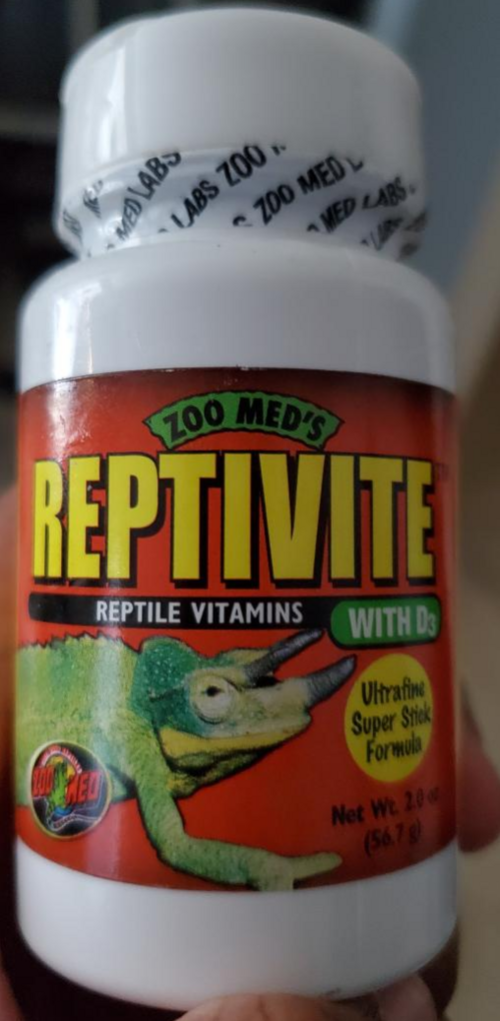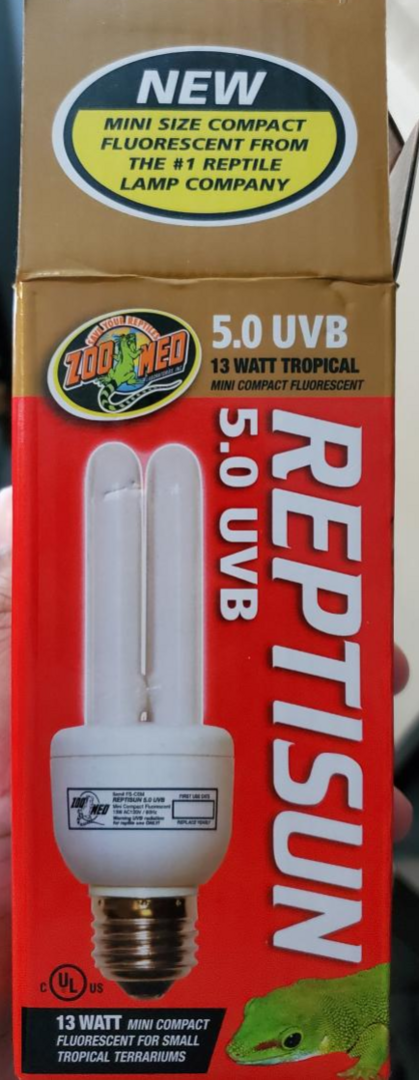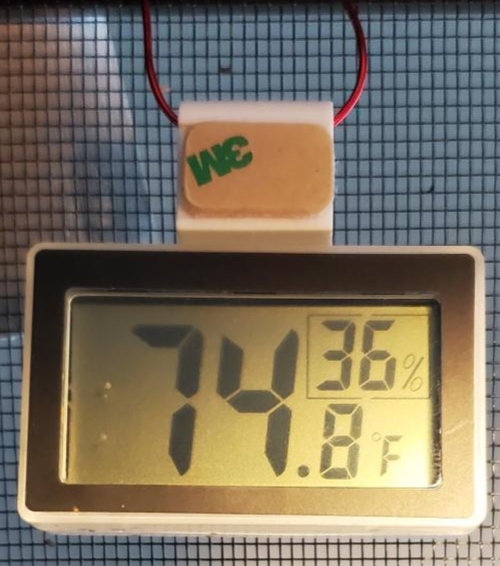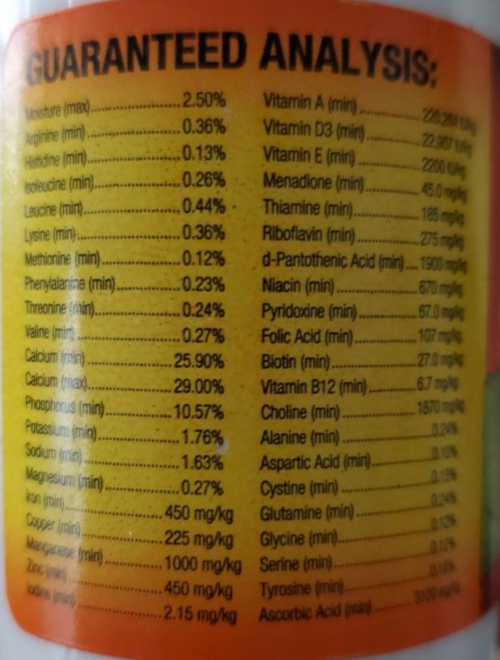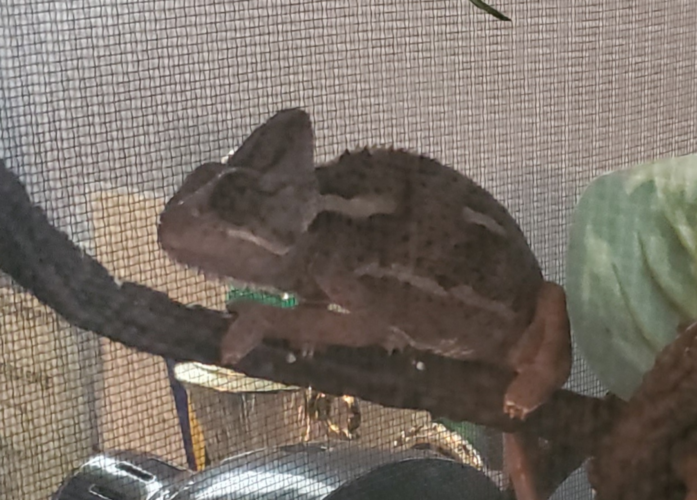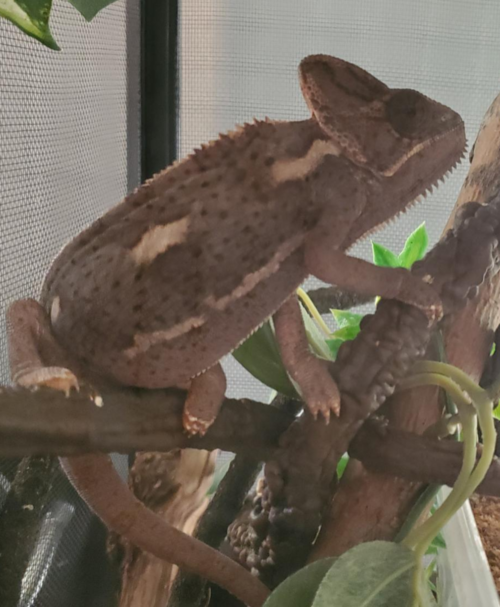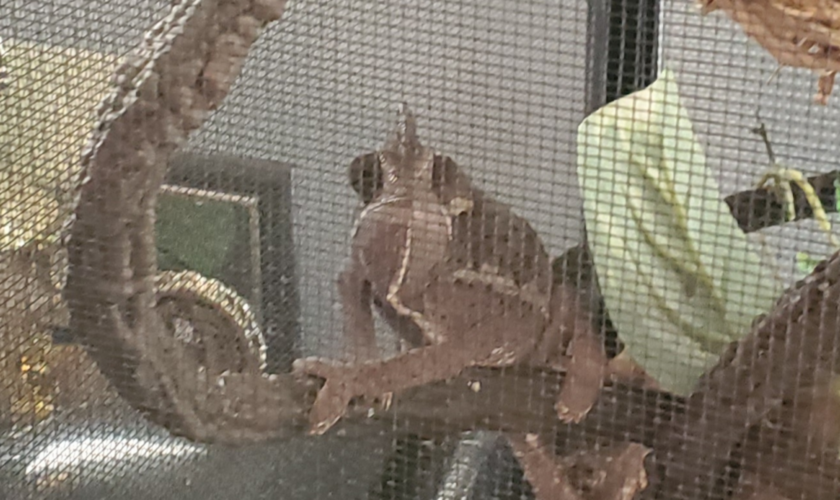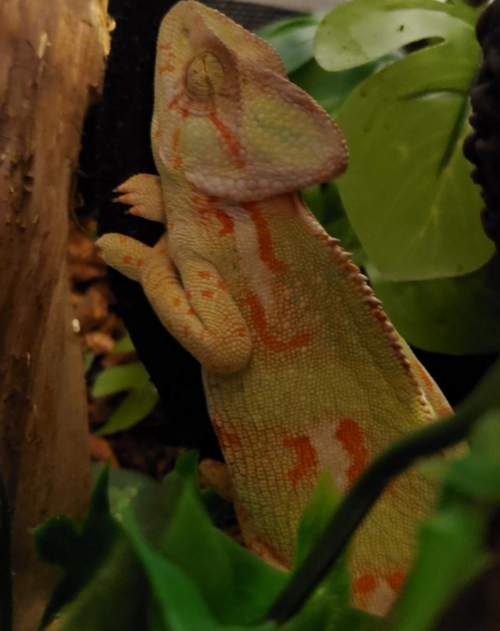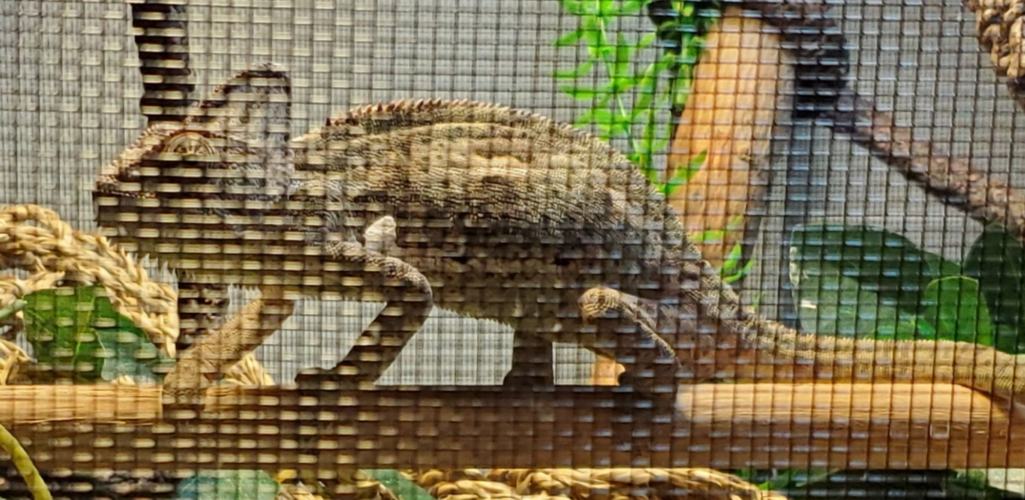First time pet owner, got my little chameleon as a surprise in Feb. of 2021, so naturally I'm not too educated on the subject. I have, however, watched plenty of videos, talked to chameleon caretakers and have searched online on how to take care of my little lady.
Not sure how old she was when I got her, but she was small enough to fit on my finger. I set up a large laying bin with wet sand, give her calcium, food, and plenty of water. Her cage has lots of (artificial) leaves and vines so she can hide if she needs.
But she's still always a very dark color, even when she's not basking. The only time it changes is when she sleeps, where she turns bright green. She's also very wary of me, even after practicing handling and hand feeding her, when I enter the room I can tell she gets uneasy, and I can't get too close without her crawling behind something. It's been 4 months and she still hasn't warmed up to me yet, even after constantly and carefully spending time around her. Any advice?




Not sure how old she was when I got her, but she was small enough to fit on my finger. I set up a large laying bin with wet sand, give her calcium, food, and plenty of water. Her cage has lots of (artificial) leaves and vines so she can hide if she needs.
But she's still always a very dark color, even when she's not basking. The only time it changes is when she sleeps, where she turns bright green. She's also very wary of me, even after practicing handling and hand feeding her, when I enter the room I can tell she gets uneasy, and I can't get too close without her crawling behind something. It's been 4 months and she still hasn't warmed up to me yet, even after constantly and carefully spending time around her. Any advice?

